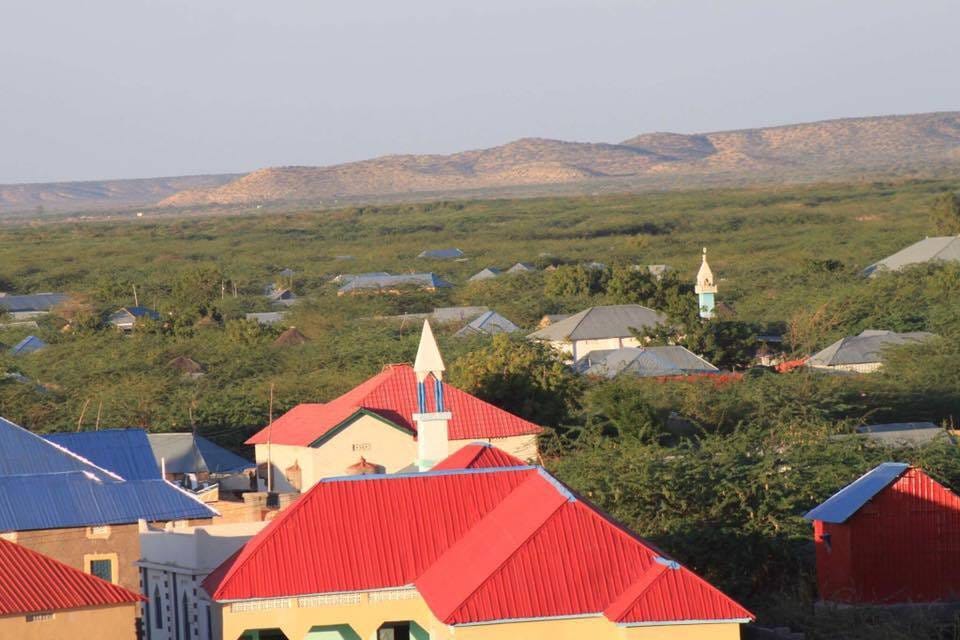🔅 Ganvie: Africa's Unique Floating Village
Plus: Nigerian Chef Cooks Up a Guinness Record, Sudan's Civil War — Half the Population in Need of Aid, Somalia's Double Climate Change Disaster, And much more...
Photo of the day: Maputo, Mozambique

Markets:
🔻 Nigerian SE: 52,109.43 (-0.90%)
🔻 Johannesburg SE: 77,667.96 (-0.92%)
— Ghana SE: —
🔻 Nairobi SE: 98.34 (-1.64%)
🔺 US S&P 500: 4,174.02 (+0.37%)
🔺 Shanghai Composite: 3,297.32 (+0.40%)
Ghana's Debt Overhaul: Investors, Get Ready | The IMF has just given investors a heads-up about Ghana’s upcoming debt overhaul. The West African nation is looking to service relief of $10.5 billion from 2023-2026, and the IMF just approved a $3 billion loan to help them out. But that’s not all: Ghana also needs to reduce its public debt-to-GDP ratio from 88.1% to 55% by 2028. Luckily, the World Bank is also stepping in with $1.6 billion in budget and balance-of-payments support. And the good news for investors is that the Cedi currency is already strengthening against the US dollar.
*Data accurate as of the close of markets across the continent
ENVIRONMENT
Ganvie: Africa's Unique Floating Village

With its wooden stilt houses and artificial islands, the village of Ganvie is a world-famous tourist attraction in Benin.
But this floating village’s unique architecture has a long and fascinating history rooted in religion and the slave trade.
Ganvie was founded by the Tofinu tribe, a population of West Africans skilled in fishing known as the "watermen". They made a move into Lake Nokoué in the 17th century to protect themselves from the Fon tribe, who were selling members of other tribes to Portuguese slave traders.
The decision to build the village on the lake was not only a physical barrier, but also rooted in religious beliefs. These beliefs prohibited the Fon tribe from attacking people on water due to its sacred nature.
So what does the village look like?
Ganvie is home to about 45,000 people living in over 3,000 stilt buildings of various types, including houses, banks, restaurants, markets, hotels, schools, and religious spaces. Residential houses mostly employ traditional methods of wooden stilts, while public buildings such as schools and religious spaces are built with modern methods of concrete stilts and sandcrete blocks.
The stilt structures were designed to complement an urban plan consisting of small artificial islands as urban courtyards linking two or more houses, as well as large water streets to allow easy movement by canoe across all parts of the village.
That sounds pretty cool.
It is — and it attracted up to 10,000 tourists annually, until the pandemic. However, this influx of tourists has impacted the locals and their socio-ecological practices that sustain this water environment. Aquaculture has become increasingly challenging to maintain as the village struggles to retain its economic foundation.
So what are the locals doing to manage this?
The locals have opted to use materials that decompose in the water ecosystem over time and do not have a negative impact on it. They have also maintained their traditional building practices and religious beliefs to keep their unique lifestyle and offer lessons for the design of prospective floating cities.

Baobab with friends and colleagues for free daily updates on African business, money, and current affairs.
OTHER HEADLINES
Across the Continent

🇳🇬 Nigerian Chef Cooks Up a Guinness Record | Nigeria has a new hero: Hilda Bassey, a 27-year-old chef who has set out to break the Guinness World Record for the longest individual cooking session. The current record stands at 87 hours and 45 minutes—set by an Indian chef in 2019—but Bassey has cooked for a full 100 hours with the support of her fans, who camped outside the event centre to cheer her on. The record isn’t official yet—it has to be certified by Guinness World Record officials—but if Bassey’s 100-hour culinary feat is successful, she’ll have earned her place in the pantheon of cooking champions.
🇸🇩 Sudan's Civil War: Half the Population in Need of Aid | With a civil war in full swing, half of the population now needs humanitarian aid. Over 1 million people have been displaced, and aid agencies can’t even access the capital city of Khartoum, where there's no power, no water, and no food. Peace talks mediated by the US and Saudi Arabia have failed to produce a ceasefire. To help, the United Nations is launching an appeal for $3 billion in aid. Meanwhile, Sudan’s top military leaders are trying to sort out the power struggle between General Abdel Fattah al-Burhan and General Mohamed Hamdan Dagalo (aka Hemedti). Unfortunately, so far, all the negotiations and airstrikes have been for nought.

🇸🇴 Somalia's Double Climate Change Disaster | Just when Somalia thought the drought was over, a flood of epic proportions submerged the city of Beledweyne. The water wiped away homes, businesses, and livelihoods, forcing more than 245,000 people to flee. Scientists and aid agencies have warned that climate change is accelerating humanitarian emergencies, particularly in countries like Somalia, which contribute least to CO2 emissions. The World Bank estimates that by 2050, at least 216 million people worldwide could be forced to move due to climate stress.
FOOD FOR THOUGHT
Proverb of the Day
“The day before yesterday and yesterday aren't the same as today.”
— Kenyan Proverb.



